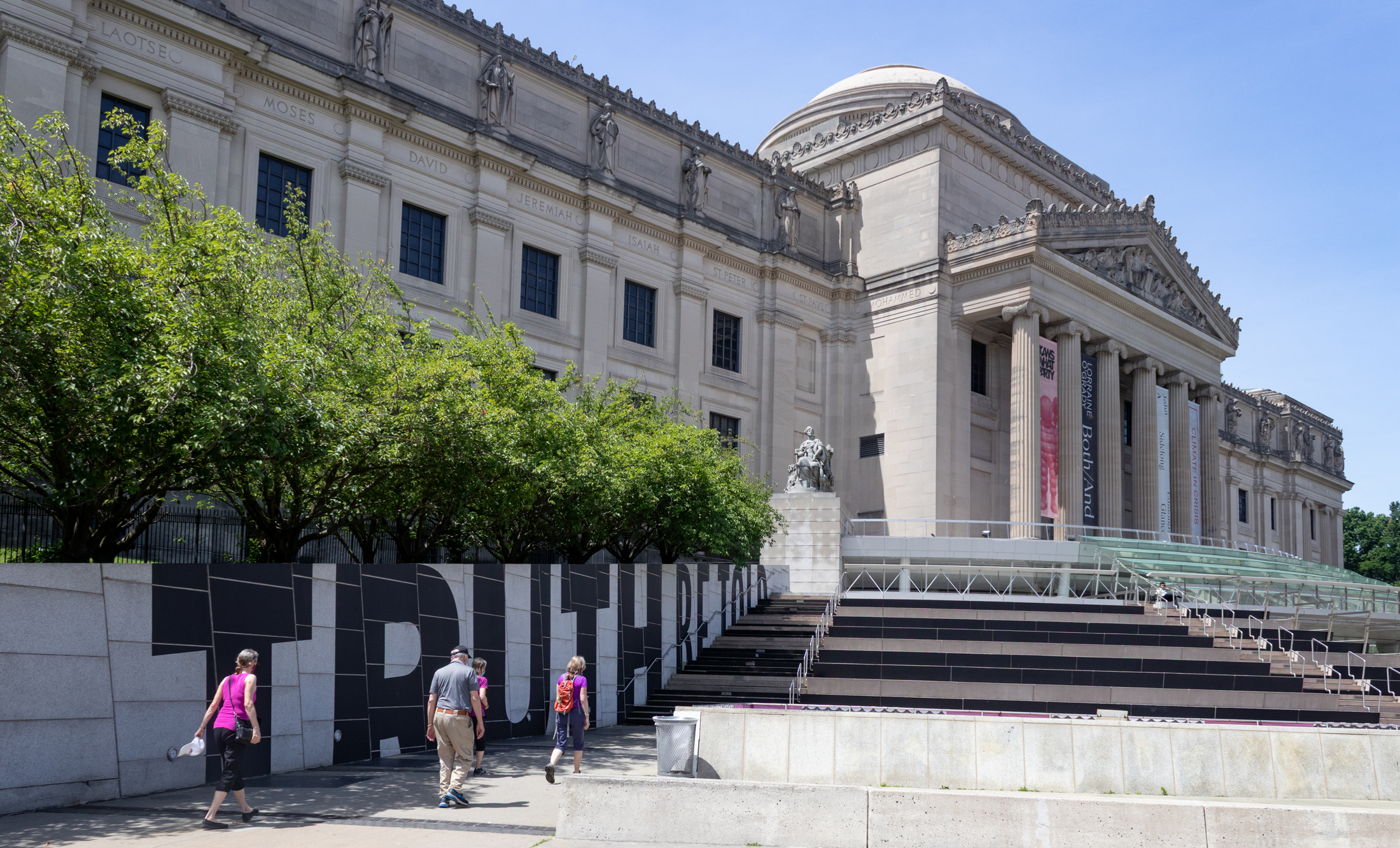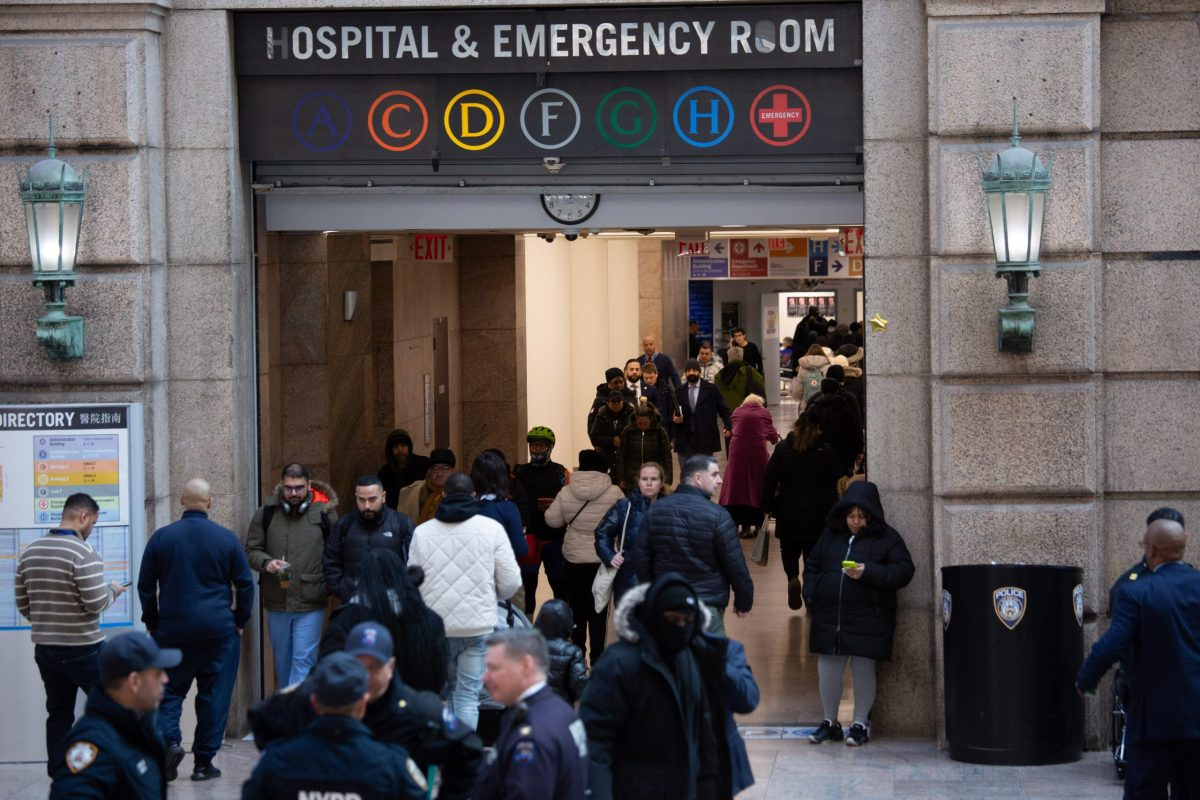Kevin and Mitch Go to the Beach, Part Four
The sun, or as Mitch refers to it, the “burning thermonuclear eye of God,” was beating down mercilessly, or as merciless as 80 degrees can get. Unlike Rockaway peninsula residents, I’m not a beach devotee; like Nixon, I keep my shirt and shoes on when walking in the sand, though I skip the jacket and…

The sun, or as Mitch refers to it, the “burning thermonuclear eye of God,” was beating down mercilessly, or as merciless as 80 degrees can get. Unlike Rockaway peninsula residents, I’m not a beach devotee; like Nixon, I keep my shirt and shoes on when walking in the sand, though I skip the jacket and tie, unlike Tricky Dick. We had made our way across the Gil Hodges-Marine Parkway Bridge and along the Riis Park beachfront, and thence along Rockaway Beach Boulevard, as described in Part One, Part Two and Part Three. Before kicking it in the head for the day, we made our way steadily toward the transit hub at Rockaway Park.

Saint Francis De Sales Church, at Rockaway Beach Boulevard and Beach 129th Street, has been in existence since the early 20th Century and has seen the effects from the destruction of the World Trade Center, viewed clearly from the Rockaways; the crash of American Airlines Flight 587 on November 12th, 2001; and Hurricane Sandy, October 29-30, 2012, which devastated the peninsula. The church has played a major role in the succor and encouragement of the victims of these tragedies as well as a focal point of community gatherings and relief operations.

Directly across the street, catercorner from the church, is a joint memorial to 9/11/01 and 11/12/01. The remembrance is a plaque mounted on a stone, both situated near eye-level on a brick wall. Also situated atop the wall is a statue of Jesus, welcoming all. The dedication on the plaque sets the November 12, 2001, accident in the neighborhood and refers to passengers and flight crew of Flight 587. It names the five people on the ground, parishioners of St. Francis de Sales, who died in the crash: Helen and Thomas Concannon, Kathleen and Christopher Lawler and Franco Pomponio. Only weeks before, the parish lost 12 members of its family when on 9/11/2001 both towers of the World Trade Center collapsed in the terrorist attacks. Sponsored by the parish, the memorial was dedicated in 2003.

All waterfront properties on the Rockaway peninsula were devastated or compromised in some way by the hurricane. The Ocean Promenade, or the boardwalk running from Beach 9th Street in Far Rockaway west to Beach 126th Street in Belle Harbor, was completely destroyed, with sections of it winding up floating in the community’s side streets. In Part Three, Mitch described methods in new boardwalk construction and shoring up of the shoreline, to mitigate any further hurricane attacks in what is predicted to be the Age of Storms as the earth gradually warms.

Appearing out of the still-rebuilding beachfront like a ghost was the old Hotel Del Mar, at what was Ocean Promenade and Beach 125th Street, one of many seaside hotels built along the water in the early 20th Century as Rockaway Playland was built and residential developments began to march west in Rockaway Park, Belle Harbor and Neponsit.
The Del Mar, which opened in 1930, occupied the seaside mansion built in 1912 by Edward and Josephine “Hickie” Wren on Triton Avenue, an early name for Ocean Promenade. An above-ground basement and a wraparound porch that accepted the breeze no matter which direction provided adequate to excellent cooling on hotter days before the days of air conditioning. A small rooftop observatory was provided to view the stars, planets and moon in the era before blaring and glaring sodium lighting rendered them nearly invisible. Edward Wren, born in Ireland, was a successful department store entrepreneur, known in the era as a “merchant prince.” He and his family sought a seaside dwelling in the early 20th Century as he had contracted Bright’s disease, a disorder of the kidneys, and fresh air was a major component of therapy then.
After Edward Wren died in 1917, the home was sold to new investors who turned it into the Del Mar, which for several decades was among the most popular resorts on the peninsula, hosting myriad weddings and bar mitzvahs. Having long reached retirement age itself, the Del Mar’s final incarnation was as the Chai Home for Adults.

Heading north along Beach 121st Street we were, at first, temporarily perplexed by the wood five-pointed stars affixed to hundreds of telephone poles along the main and side streets. I wasn’t surprised to learn that they are the work of an organization called Stars of Hope, initiated after an EF-5 tornado leveled Greensburg, Kansas in May 2007. Stars of Hope, supported by donations, produces thousands of plain wood stars, which are then decorated by residents (especially children) of areas and neighborhoods devastated by acts of God and man, attaching them to public utility poles to help communities recover in spirit.

There’s a pair of semicircular roads adjoining Rockaway Beach Boulevard between Beach 120th and Beach 121st Streets, and at first I was also confused about why they would be built here. They have been here a long time, showing up on maps as early as 1907; it was then called Washington Circle. But the explanation is simple. The communities west of the end of the railroad line in Rockaway Park were gradually built going east to west, and at first what was called “The Boulevard” ended here with a traffic roundabout, mainly for horsecarts and early tin lizzies. Then, Rockaway Beach Boulevard continued its western progress to what would be Riis Park; note, it is much wider west of Beach 121st. Trolley cars also plied the busy roadway.
The circle has come to be known as Veterans Circle and contains small memorials to all of the USA’s conflicts in the 20th and 21st Centuries.
Beach 116th Street
Beach 116th Street is the main street of Rockaway Park, extending two short blocks from Beach Channel Drive on the north to Ocean Promenade on the south. It is the western terminus of the lengthy IND A train, which reaches all the way north to Inwood in Manhattan. Rockaway Park sprung up around the terminal and stations of the NY, Woodhaven and Rockaway Railroad, which opened in 1880 and later became part of the Long Island Rail Road. The line became a part of the NYC subway system in 1956.
Rockaway Park has been known in the past as the “Irish Riviera” or “Irish Town.” A cluster of bars and bungalows that served as a summer refuge for Irish New Yorkers until it was razed 50 years ago to make way for high-rise apartments. Hordes of working-class Irish — immigrants and their children — streamed out of buses and trains and found an escape from the hot tenements of pre-air-conditioned New York. They spent weekends in bungalows and rooming houses and passed the hot days on the beach. Today the Irish Circle, at Beach 109th and Rockaway Beach Boulevard, and a scattering of taverns in the area, remember the old Irish influence.

Rockaway Park’s 9/11/2001 memorial is on the north side of Beach Channel Drive where it meets Beach 116th Street and Newport Avenue. It commemorates the 70 residents of Rockaway Park and the 343 firefighters killed when they responded to the burning and collapse of the Twin Towers. It is highlighted by a pavilion with a stained-glass roof designed by artist Patrick Clark. The “343″ memorial sculpture was designed and begun by Russian sculptor Isabella Slobodov, and completed by Clark. The 17,000 square foot parcel faces Jamaica Bay, Broad Channel and beyond it, the towers of Manhattan. Landscaping for the project was done by Lynden Miller and Nadia Murphy.

Of all the accounts of the firefighters killed on 9/11/01, I found Capt. Timothy Stackpole’s tragedy especially poignant. He was battling an inferno in East New York, Brooklyn on June 5, 1998 when a floor collapsed, killing two fellow firemen and leaving him with serious burns. He fully recuperated from his injuries and returned to active duty: only to perish at the World Trade Center, leaving behind a wife and five children. Stackpole was a graduate of my alma mater, St. Francis College in Brooklyn.

Beach 116th is the widest north-south street on the peninsula (actually it shares the title with Beach 94th and Beach 108th Streets). Parking is available on each side of the street that is divided by a center median.

The Rockaway Park station, the terminus of the A train, was opened in 1917 as the last stop on the Long Island Rail Road Rockaway Branch (a “wye” diverts the train in two directions from Broad Channel, one west to Rockaway Park, the other east to Mott Avenue). The Mott Avenue station was once continuous with the end of the LIRR Far Rockaway line on Nameoke Street but the connection was severed when the LIRR ended service over Jamaica Bay in the late 1950s.

After Bathing, at Baxter’s
Rockaway Park is still home to several hotels, boarding houses, and seasonal lodging. Beach 116th, though, has several that cater(ed) to, shall we say, the transient population. It’s likely that Rockaway Park won’t soon be cleaned and yuppied as the Bowery has been in recent years, though the Williamsburg elite have begun to infiltrate, but these establishments will continue to carry on as they have been. There’s a need for them.
The Ocean View, on Beach 116th north of the beachfront, has a colorful past. Until recently it had been the Baxter Hotel, run by Irish immigrant John Baxter, who arrived from County Cavan at age 17 in 1954. Baxter ran for City Council, was a fixture at community meetings and could be seen on local-access cable TV, where he often sang and played Irish favorites on his guitar. On the show and in plays and revues Baxter produced in the small theater on the Baxter’s ground floor he skewered local politicians, whom he blamed for letting the city turn the Rockaways into “the toilet of New York City.” The rooms featured bald light bulbs in a ceiling fixtures, a dresser, a mini-refrigerator, an itchy bed with mismatched sheets and a television equipped with an antenna, not cable. The electrical system was unable to support air conditioning.

A few doors down, the Park Theater was located on Beach 116th just off the boardwalk. According to cinematreasures.org, the Park operated from about 1929 to 1961. It was an RKO house for a while in the early to mid Forties. By 1947 Movietone News had replaced RKO Pathe News. In 1947 the inner lobby was redone in red plush and the new “sliding seat” was installed so patrons could shift rearward to allow someone to pass without standing up from their seat. I have read some items to the effect that Sammy Davis Jr. and perhaps even Frank Sinatra himself performed at this theater long before their Rat Pack days.

At the waterfront we find the Rockaway Park memorial to Flight 587. Leaving from nearby JFK Airport and bound for the Dominican Republic, the plane crashed into the Rockaway peninsula in Belle Harbor shortly after takeoff on November 12, 2001. It was the second NYC air tragedy in just over 2 months, coming of course on the heels of the terrorism of 9/11/01. Studies are inconclusive but point to, perhaps, crew overcompensation for air turbulence caused by proximity to the plane that took off from JFK immediately before Flight 587. 260 passengers and crew perished as well as five persons on the ground.

A poignant monument, designed by Dominican artist Freddy Rodriguez, was dedicated November 12th, 2006, by Mayor Michael Bloomberg five years after the crash. Its windows and door are angled toward the Atlantic Ocean and beyond, the Dominican Republic. The memorial is inscribed with the victims’ names and a description of the events of the tragic day. The doorway is inscribed with the nationalities of the crash victims, and a quote from Dominican poet Pedro Mir: Después yo quiero no más que paz, or, “Afterwards, I want only peace.”

Instead of taking the subway back to Astoria and Woodside, which would have meant a number of transfers (especially for Mitch) we decided to take the handy Q53 bus, which makes limited stops on Cross Bay, Woodhaven and Queens Boulevards and Broadway back to the Long Island Rail Road/el train hub on 61st Street in Woodside.
Thus ended our beach extravaganza.
Kevin Walsh is the webmaster of Forgotten NY, the author of Forgotten New York and, with the Greater Astoria Historical Society, Forgotten Queens.









Thanks for the trip!
I hope you guys got a seat on the Q53. They really pack people in on that bus. Thanks for sharing!